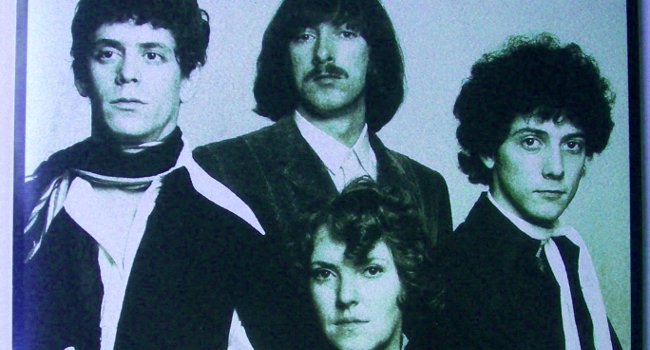The Velvet Underground’s self-titled third record turns 45 this year and has just been rewarded with The Velvet Underground – 45th Anniversary Super Deluxe Edition treatment. The third album marks the end of the band’s classic lineup, the departure of John Cale and the arrival of Doug Yule. It also marks an abrupt 180 away from the experimental art music and noise that defined their first two records in favor of what sounds at first listen to be a straight forward collection of pop songs. This change in the band’s sound has often garnered the album negative reviews when compared to its predecessors. While the departure of Cale allowed Reed to take control of the band and transform it (pun intended) into a vehicle for more mainstream-sounding music, the lyrics here are as dark and bizarre and grating as any of the feedback on White Light/White Heat and if you think “Candy Says” is just a pretty song about a pretty girl you need to listen again. Here’s the word from Pitchfork…
From the very first second of The Velvet Underground, everything about the group had changed from where they left off with the epochal squall of White Light/White Heat’s “Sister Ray”. Reed and Sterling Morrison’s amp settings were dialed down from 11 to 1; Maureen “Moe” Tucker’s thundering thump was softened into a breezy brushed-snare sway; and Reed’s ding-dong-sucking snarl was replaced by the melancholic whisper of Cale’s successor Doug Yule. It’s like returning from a holiday only to find your rat-infested apartment building had burned down and been replaced with a white-picket-fenced bungalow. And even though the song Yule was crooning, “Candy Says”, marked Reed’s first explicit character reference to the Warhol Factory scene that birthed his band, it ultimately underscored the Velvets’ increasing remove from its hazy decadence: A devastatingly intimate portrait of then-transitioning Factory regular Candy Darling, “Candy Says” is the sobering soundtrack for that inevitable moment when all tomorrow’s parties turn to morning-after, makeup-smeared, self-loathing introspection. (The album cover reinforces the reflective mood: though shot at the Factory, the Velvets look more like they’re hosting a small gathering friends in their living room, their ’67-era striped tees and fuck-you wraparound shades replaced by comfortable sweaters and sensible collared shirts.)
If The Velvet Undergrounddialled down the aggression and abrasion of its predecessors, it undercuts the mellow approach with some of the rawest songwriting of Reed’s career, and a plainspoken candor as startling as his past meditations on smack and S&M. His blunt language drives a spike into the album’s gentle jangle to unleash a maelstrom of emotions, where ecstatic moments of spiritual reawakening (“Beginning to See the Light”) are answered by cruel reality checks (“I’m set free/ To find a new illusion”), where the love of his life becomes someone else’s (“Pale Blue Eyes”), where a Jewish guy feels so fucked up, he starts praying to Jesus. Even the seemingly easy-going choogle of “What Goes On” is routinely upset by Reed’s admissions of anxiety (“One minute born/ One minute doomed”). By that token, the simultaneous-poetry experiment “The Murder Mystery” feels less like an anomalous WTF throwback to the Velvets’ avant-garde roots than the sound of the album’s slow-stewing inner turmoil coming to a boil.
Here’s the original record…
Stay Awake!
Please subscribe to my YouTube channel where I archive all of the videos I curate at Insomnia. Click here to check out more Music posts









